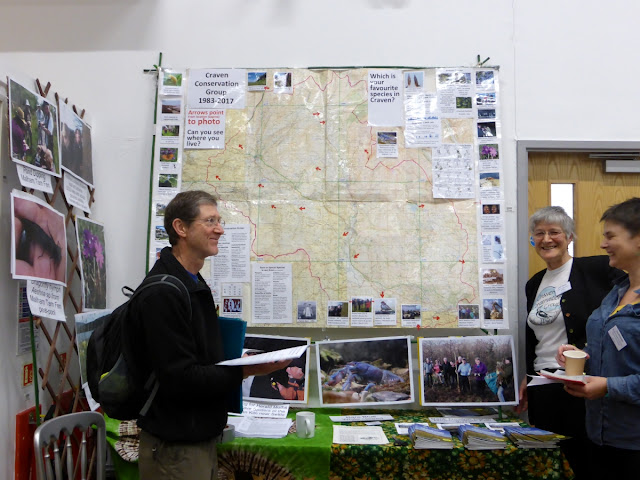We have less than a hour to explore on our eco-walk before our discussion session and tour of the church eco-features - but what a lot we see (and hear and smell)
"Do you have eyes to see but fail to see? Mark 8.v18"
Green Christian Eco-Walk
at Baildon Methodist Church
at Baildon Methodist Church
How many people notice the wild violets in the church lawn?
How many people notice the 40 planted fruit trees just starting to bloom?
But in the bottom left corner, in the weed patch below the wall, what delights me most are the shapes of the six to eight different tiny (weed) flowers - beautiful.
Baildon Methodist Church is in the upper part of the village. This is the oldest part of the village.
There used to be coal mines on Baildon moor - The last pit on Baildon moor, the Lobley
Gate pit, closed in 1863. By the late 18th century the manufacture of textiles,
in particular worsted cloth had become a major
industry in the village. In the early 19th century there was a demand for stone but by 1850 Baildon Bank Stone quarry had closed. Some history here
There is a walkway along the top of the ridge- or "The Bank" as it is known. Looking down you see the houses way below of "Mid" Baildon and "Lower Baildon" and beyond that, houses of Shipley and then houses of Bradford - but you don't see the big amount of land that is the slope itself - it's like you don't see how long a pencil is if you look directly down on the rubber. So from this railing you don't see much below
It is a south facing slope and the path wall at the top (not seen in photo) feels like a Mediterranean footpath - with the "not too common in the north of England" Black Speenwort fern.. see distribution map
 |
| Black spleenwort |
and a plant (I had to look it up) - Creeping Snapdragon from the Pyrenees (- planted I suspect)
 |
| Creeping Snapdragon - Asarina procumbens |
We can see richer areas and poorer areas. In the far distance we can see Bradford's biggest mill (Now flats)
We hear the Jackdaws - "Jac Jac Jac" -
and here is a more silent blackbird, guarding its worm
I am keen to let people see details of plants using a hand lens. "Heather leaves are 1mm long and have a white line on the back." I say.
The tree leaves are coming out as we watch. Here is a birch catkin
What type of bee is this? It does have a white tip to the tail. I think it is a Tree Bumble Bee- (which was first seen in this country in 2001) and likes flat open flowers. On the other hand it might just be a Carder Bee - These have a long tongue that is capable of getting sugar from much longer, narrower flowers (such as the snapdragon above).
We have a good view down to Baildon Old Hall where two of us have occasionally attended Bradford Speakers Club Meetings. It is a typical example of a 16C Manor House, built by Robert Baildon in 1553, on the site of a previous Mediaeval Manor House, part of which still remain in the South Wing which dates back to the 13C. Robert was a descendant of the Baildon family who had been connected with Baildon since the 1100s.)
You can see the solar panels of the church.
John has told us much about the history of Baildon - there is not space to fit it in here.
Click here to see our tour of the church to look at eco features
and their plan to build a "Passivhaus" in 2020
















































